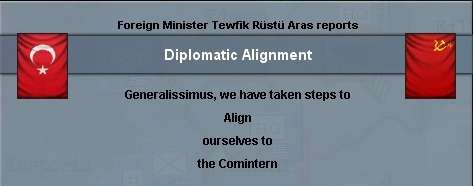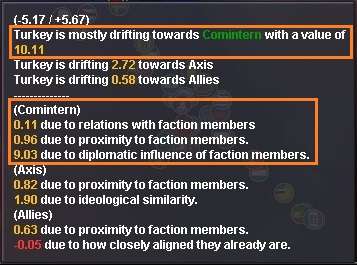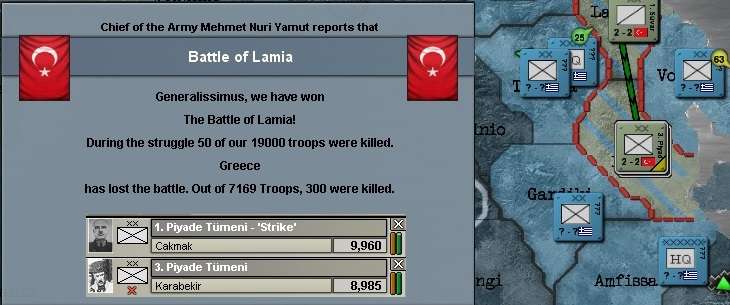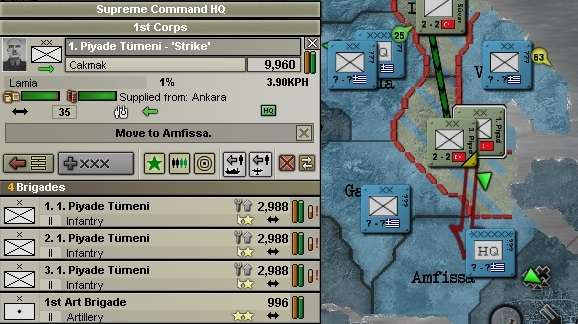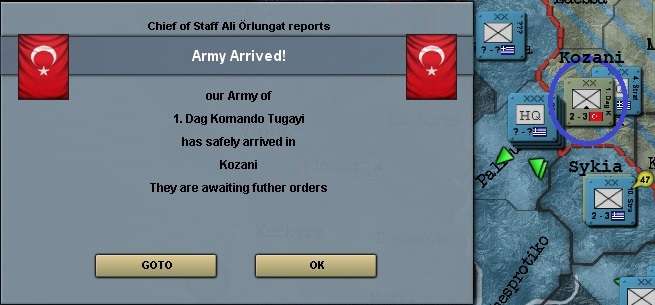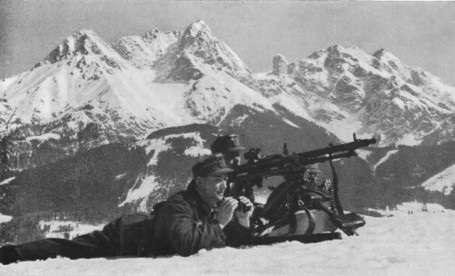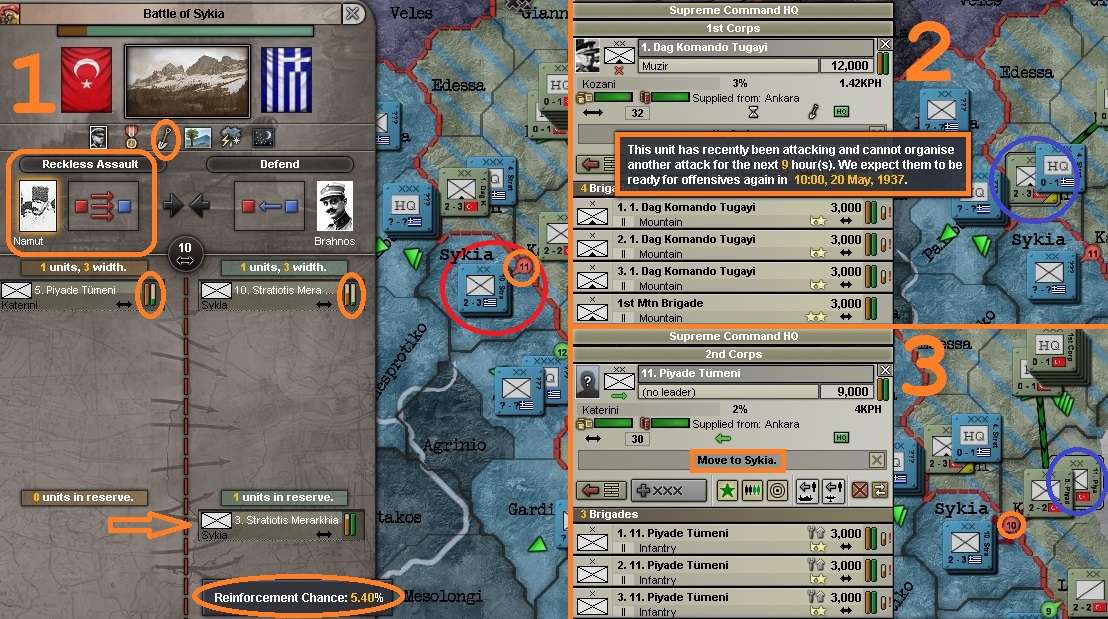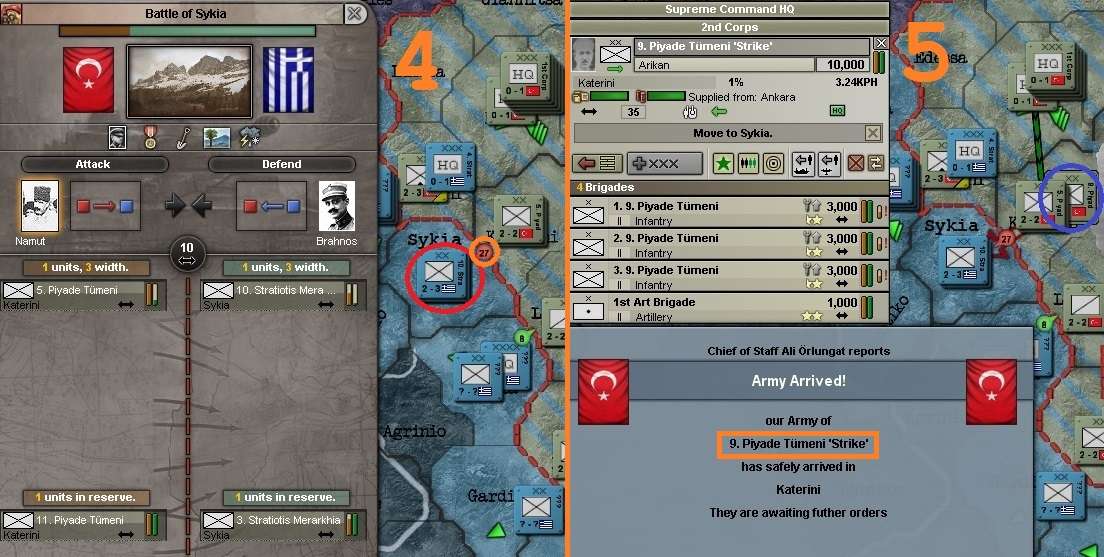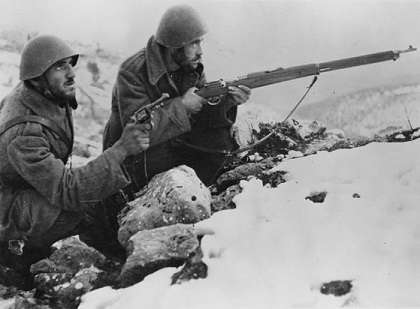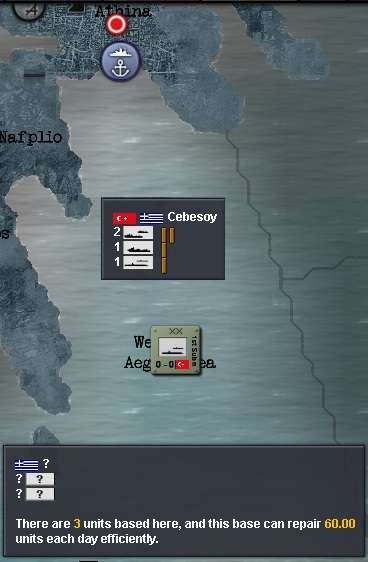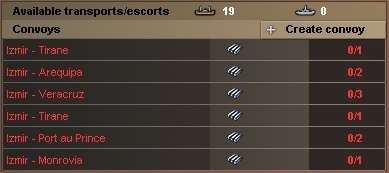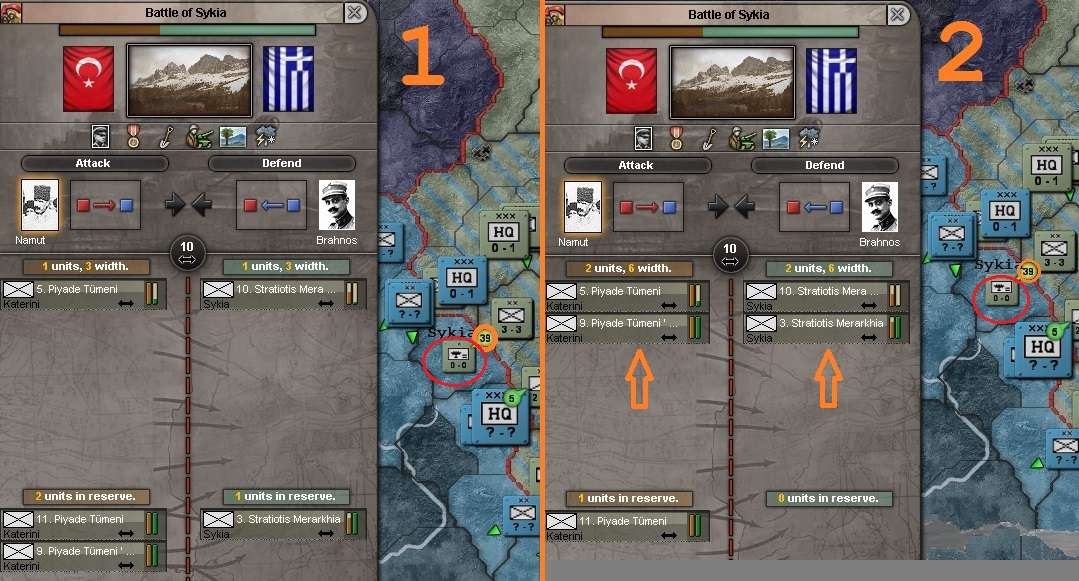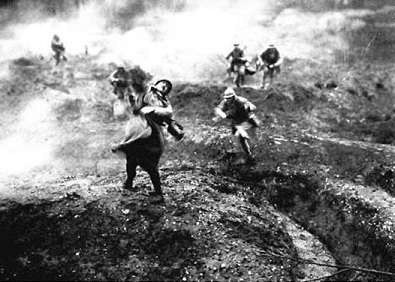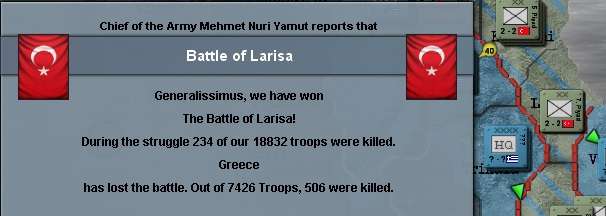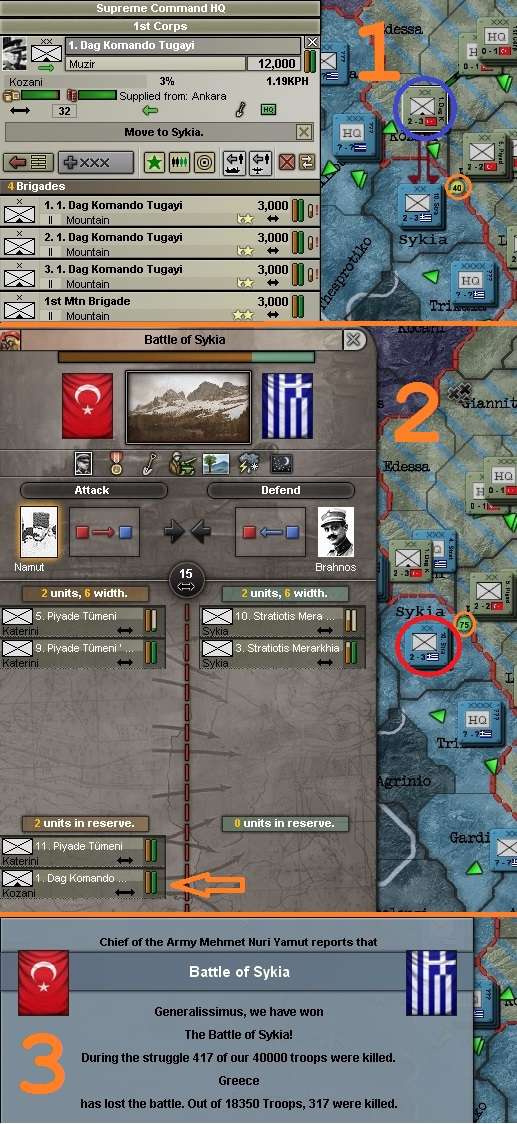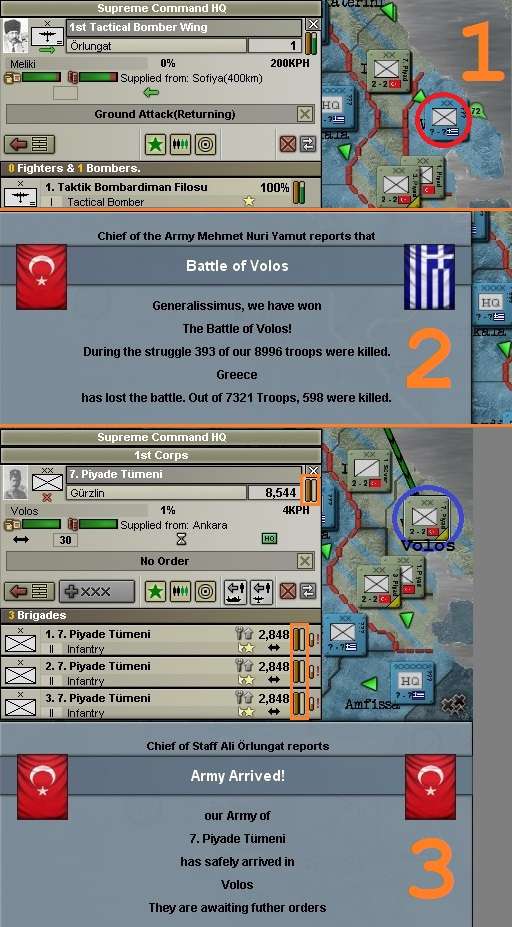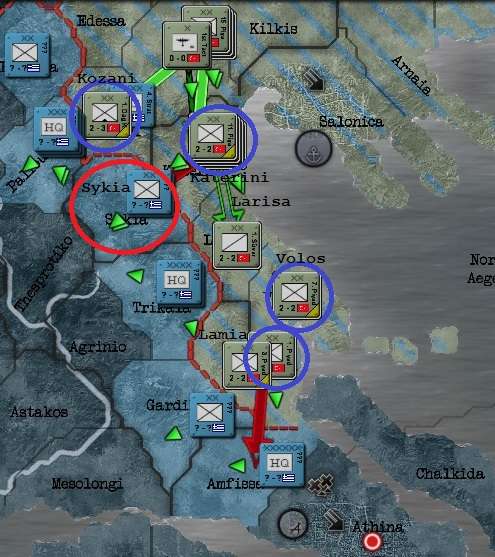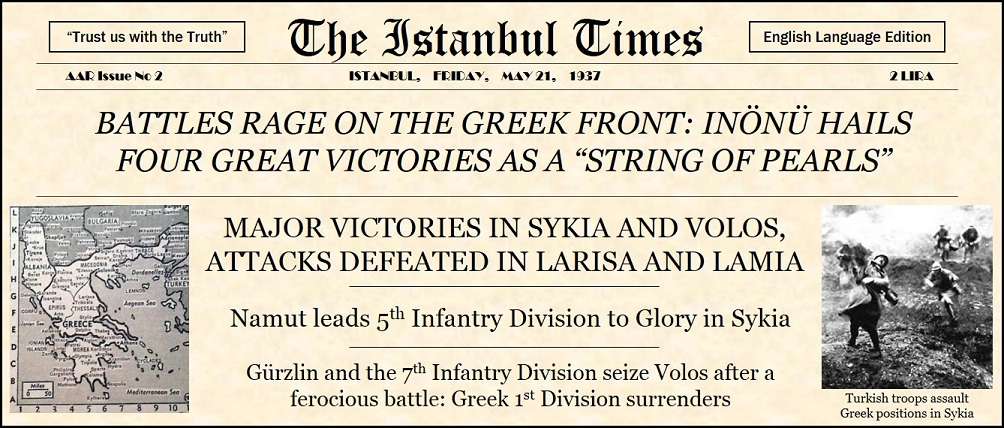Chapter 19: War with Greece #6 – "All In" (21 to 29 May 1937)
The last hectic period of combat in Greece must surely mean things will calm down for a short time while both sides regroup and position themselves. Or so we thought! Things moved more swiftly than Inönü had thought likely, but given the newly instilled principle of aggressive action with quick strikes aimed straight at the enemy’s heart, this risk – even potential chaos – was embraced by his commanders.
21 May 37 (D+26)
1700. By the evening of 21 May, units begin arriving in the new forward positions. Namut's 5 Inf Div, still disorganised after its long but glorious battle, arrives in
Sykia. They will hold until relieved by approaching reinforcements. A quick check reveals that Namut’s skill level has advanced to 3, making him the premier field commander in the Turkish Army. The fresh 15 Inf Div, under MAJGEN Gataly, simultaneously arrives in
Kozani to further secure the mountain flank of the advance. They are immediately ordered to press the advantage and continue west into the foothills of
Paliouria, which only has retreating Greek units in it. No respite for the Wretched Greek!
2100. It does not take long for 15 Inf Div to come to grips with the enemy 6th Div. The odds look good – we hope for a quick gain and a far more defensible front while the real battle for Greece goes on to the south.
22 May 37 (D+27)
0300. Cakmak’s 1 Inf Div arrives in
Amfissa: initial indications are that
Athina is held by a single infantry division (of unknown strength) and a couple of HQs. This is less than we had anticipated – the Greeks must have stripped their defences to send reinforcements (which we have since defeated in open battle) northwards. 3 Inf Div is on its way from the north, but is still some time off and has not reorganised yet from its last attack. But Cakmak throws caution to the wind and radios HQ 1 Corps:
“Athens has been fortified and is held by an enemy infantry division. There is only one option: we attack! Glory or death! Onwards!”
He will test their defences and, should there be a chance of success, will press ahead with all speed and see if he can make them pay dearly for their folly. Our single tac wing, now finished from supporting the earlier battles in
Sykia and
Volos, is now ordered to support the attack on Athens, even though we know they have anti-aircraft defences in place.
The morning of 22 May 1937. Bomb damage in Piraeus, Athina’s harbor, from Turkish air raids.
1100. Battle is joined in
Athina – now comes the acid test of Greek strength and willpower. The battle is balanced and could prove difficult, but there is only one way to find out: Cakmak decides to turn the probe into a fully-fledged attack on the defending Greek 14th Div.
1800. While the battle continues in
Athina, to the north-west, 3 Cav Div is ordered to advance from
Larisa and occupy
Trikala, to secure another link in the mountain chain along our coastal line of advance. There are still many Greek divisions in northern and central Greece, and both Inönü and the 2nd Corps commander, LTGEN Artunkal, are concerned about any Greek efforts to cut off our advance, which is stretched out and exposed in less defensible coastal terrain. This is in accordance with the original Phase 2 of the battle plan. Basically, we want to contain the rest of the Greek army while we try to secure
Athina and then land in Crete to secure the last Greek VP location. This will be easier with better defensive terrain and more depth. They will report in detail when they reach their target.
23 May 37 (D+28)
0000. Wehib Pasha’s 1 Cav Div arrives in
Lamia and is ordered straight to
Amfissa, to either provide flank protection or join the fight for
Athina, whichever is necessary. At the same time, their comrades in 3 Cav Div, who have no permanent commander as yet, are now fighting the Greek 2nd Div in
Trikala. While the odds appear even, the Greeks looks badly disorganised from recent combat, so 3 Cav should prevail.
0700. In
Sykia, 11 Inf Div arrives, allowing the battle weary 5th to move away from the line to continue their recovery and now act as a reserve.
1200. The
Battle for Athina continues. Cakmak reports the odds (
60%) are tipping in our favour and that enemy organisation is failing.
Although they put on a brave face here for the local civilians, after little more than a day of sporadic and half-hearted fighting, the desperate Greek defenders are basing their artillery from inside the capital city of Athens (23 May 1937).
1400. Cakmak reports victory! Losses were minor and the Greeks are fleeing. Aerial recon shows no other Greek fighting formations approaching the city. Cakmak is now in a foot race (a sprint, not a marathon) to occupy the entire province, which will be a terrific blow to the Greek economy and morale. A very satisfactory end to the fourth week of the campaign.
24 May 37 (D+29)
1900. Cakmak is still moving to occupy the capital province. After three days of fighting, 15 Inf Div reports victory in the hills of
Paliouria. Our western flank again becomes more defensible.
25 May 37 (D+30)
0900. Another 2nd Corps unit arrives in
Katerini, 13 Inf Div. They are ordered south straight away to
Lamia, where there is a bottleneck in our supply lines, on clear terrain that is easy to attack. 3 Cav Div have now won the battle for
Trikala and move to secure it. Inonu's "string of pearls" grows longer!
2000. 3 Inf Div arrive in
Amfissa. Cakmak has the situation in
Athina under control and should be able to hold it indefinitely once he digs in. Karabekir, the 3rd’s commander, sees an opportunity to cut off the main body of the Greek Army north of the Peloponnese, if he can strike west to take
Mesolongi. This is risky, but could yield great rewards while we wait to grind the Greeks into surrender. Although it looks lightly defended now, at least two Greek divisions can been seen retreating towards it, while we have no visibility of what else they may be sending south. And he will be at the end of an extended supply line. All is good – we attack! Inönü concurs – he likes Karabekir’s attitude, while silently hoping it doesn’t get him killed and his troops wiped out. No gain without risk!
Troops of the Turkish 3 Inf Div marching in Amfissa on their way to a bold and dangerous attack on Mesolongi. If it succeeds, almost the entire Greek Army will be penned up in a massive pocket in central Greece, while the fate of their nation is decided hundreds of kilometers away.
26 May 37 (D+31)
0100. Shortly after midnight, Karabekir’s 3rd runs into the first Greek resistance in
Mesolongi. The odds are bearable, but this isn’t going to be easy. Fresh Greek troops (13th Div) look like they too have just arrived, from
Gardiki to the north-east (spotted on the move the day before). Another Greek division can also be seen on its way. At least our rapid movement has once again caught the Greeks in the open and before they can entrench.
1600. 3 Cav have occupied Trikala without any further incident. They will hold and dig in.
1800. Momentous news: Cakmak has the honour of occupying another enemy capital! But the fall of Athens does not cause the Greek government to surrender. They have evacuated to re-establish their doomed regime in Corinth (
Korinthos). Cakmak has nothing but derision for the “flamboyant tough guy” Greek PM – as he eats a celebratory meal with his HQ officers in their Cabinet Room! This confirms what we had assessed: Crete (
Irakleio) would need to be conquered before we can finally bring the Greeks to the surrender table. And the peace we will offer them will indeed be a bitter one. Unlike the fine lamb cutlets and Ouzo Cakmak and his officers are consuming at their expense!
2100. Admiral Üngen is ordered to embark 17 Inf Div onto the 1st Fleet and invade
Irakleio. Our limited transport capacity means we can only take one division at a time, while our lack of amphibious doctrine and purpose-built landing craft will make this a slow and cumbersome process. We can also expect the Greek Navy to try to disrupt our landing. Apart from the cruiser and destroyers our submarines spotted some days ago, we don’t know if they have any submarines or heavier naval forces at their disposal.
27 May 37 (D+32)
The seizure of Greek cities has added a little to our leadership capacity. So far
Athens has yielded 0.18 extra base leadership,
Salonica 0.06 and
Larisa 0.03. A survey of the Bulgarian Vilayet showed 0.22 in total added, from
Sofiya and four other smaller cities. The increases have been applied to our research and officer training. Officer strength is now at 97%, but with a number of units in production we will need more, while we would prefer to be well over the 100% mark eventually.
1000. Both our tactical bomber and interceptor wings have been ordered to rebase to Athens. This will put them both in range of central and southern Greece, while the tac wing will be able to support our troops in Crete. Though their organisation has been lowered by the recent attacks on Athens and the rebasing move.
2300. By the end of the day, 3 Inf Div continues to fight alone in
Mesolongi (odds now at
62% in our favour). 7 Inf Div (where recent fighting has taken Gürzlin from 0 to 2 in skill level) have partially recovered from their efforts in
Volos and have been ordered to the key choke point of
Lamia, as two Greek divisions have now been seen attacking from
Gardiki.
Lamia was earlier left undefended when 1 Cav Div had been sent to Athens in the hope of crashing across the Peloponnese. This proved to be an over-reach, as the reinforcing divisions from the north were making slow time. This could be a tricky battle, but at least
Athina can be supplied by sea if it is temporarily cut off. It also exposes 3 Inf Div even more in their attack, but they are ordered to continue. We will not let
Lamia fall without a fight! 1 Cav Div has been recalled to
Amfissa, where they will either hold, assist in
Lamia, or support 3 Inf Div in
Mesolongi, whatever is required.
1st Fleet also advises that the landing of 17 Inf Div has begun in Crete. Instead of a direct assault on
Irakleio, as planned, Üngen has decided to land them to the west, in
Rethymo, where they will be unopposed (or so we hope, by the time they land). This was done autonomously, but perhaps it was because our doctrine did not permit us to assault a position held by enemy forces
[Ed: I’m not familiar enough with the way the amph landings work to know exactly what happened there. I’ve done direct assaults before, but with the British, where their doctrine would have been more advanced]. In any case, this seems for the better: casualties from a direct attack would have been far heavier. But we must now gain the port to guarantee our supply. We will see how long their stocks last once they hit the beaches.
28 May 37 (D+33)
1400. The battle in
Mesolongi gradually starts to swing against our 3rd Inf Div (
56%), but is still slightly in our favour. Our air units are still regaining organisation in
Athina: we are trying to husband them for now, especially the tac wing for the coming decisive battle in Crete. 1 Mtn Div is ordered south from
Kozani (which is no longer under Greek threat) through
Sykia to
Trikala. It will take them time though to make it over the mountainous terrain. Our commanders are becoming more concerned about the continued Greek advance on
Lamia, and 3 Cav Div (in
Trikala) does not have the attacking strength to offer much support for the battle that is coming.
Meanwhile, 9 Inf Div ‘Strike’ has been ordered to move with all speed, using strategic redeployment, to
Salonica, where they will be embarked on 1st Fleet as soon as it has landed 17 Inf Div on Crete and returned. A single division may not be enough to win there (or at least quickly), we don’t want the war to drag on any longer than it must, and there is also concern the 17th may run out of supply and organisation. They are one of our less experienced divisions, so may not be as full of the hard-won fighting spirit that fills our veterans of Bulgaria and Greece to overflowing.
1600. Karabekir radios: “Victory in Mesolongi”! There are moderate casualties and some impact on 3 Inf Div’s organisation. They are preparing for more Greek forces to appear shortly.
29 May 37 (D+34)
0000. Gürzlin’s 7 Inf Div arrives in
Lamia and starts to dig in, with the two Greek divisions bearing down on them. Their organisation is still only back to about 30%. 13 Inf Div is on the way and is now in
Larisa (one province to the north). 1 Cav Div is still on its way back to
Amfissa from
Athina. 5 Inf Div, also still recovering from its fight in
Sykia, is still two provinces to the north, but also on its way.
1000. 3 Inf Div now contacts another recently arrived Greek division – the 4th – in
Mesolongi. The fight there resumes, the odds are again reasonable but not decisively in our favour. More hard fighting.
1700. 17 Inf Div, with MAJGEN Orbay (Skill 2) in charge, has finally landed in
Rethymno, to discover the Greek garrison in
Irakleio is on its way to attack! This could be dangerous, but if the attacks fails and we can get 9 Inf Div to land and reinforce in time, it means the Greeks have forfeited their entrenchment bonus. It could backfire on them. Or destroy an entire division if we are not careful and rout instead of retreating in good order, perhaps to
Chania or
Tympaki. 1st Fleet sails straight for
Salonica, where 9 Div should arrive shortly.
17 Inf Div lands at Rethymno on Crete. It took almost two days to complete the landings. The Greek Navy did not make an appearance – a surprising but welcome development.
The day, and this update, ends with Phase 2 of the
Great Offensive completed, Athens secured, the ground battle for Crete (Phase 3) about to begin and the Greek Army threatening to divide our forces on the mainland in two at
Lamia, while we try to do the same to them at
Mesolongi! At this rate, we should not expect the pace to lessen. The battle in Crete will be difficult, as our limited navy makes it a slow business to get superior firepower to bear, while our our tac air remains grounded to re-organise after days of combat and a rebasing to new facilities in
Athina.
Coming Up: Cakmak lives the high life in Athens, while the rest of Greece is on fire! Can Turkey wrap up the battle for Crete, force the Greeks to surrender and formally declare the new
Greater Turkish Republic? Or will the Turks fall at the last hurdle? Stay tuned to find out.
 the movie title "The thin red line" came to mind.
the movie title "The thin red line" came to mind. 

